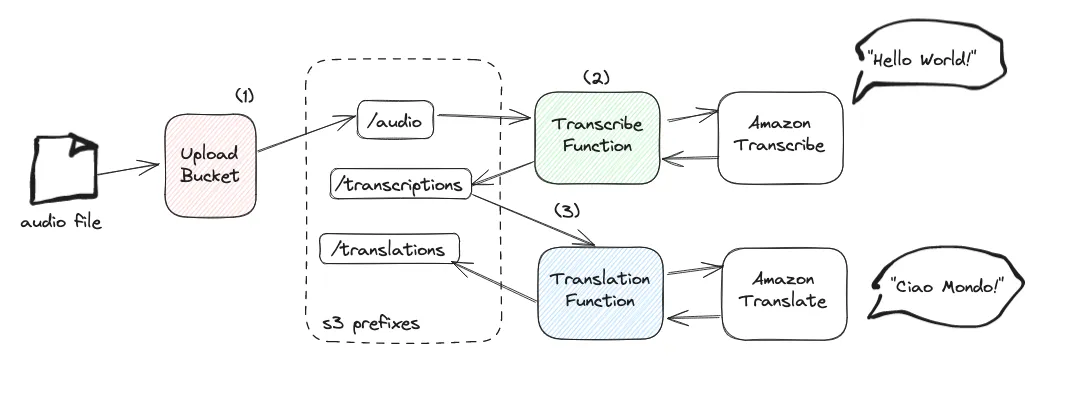XRAI Glass - Let's Build a Startup Showcase!
Learn how XRAI Glass is making the world a better place, one word at the time, with Amazon Translate and Transcribe
Also, let us know if your startup is using tech to make the world a better place!
- When an audio file is uploaded to an Amazon Simple Storage Service (S3) bucket under the prefix
/audio - we trigger an AWS Lambda function that makes use of Transcribe to get text out of the audio file. This function will write the transcription in the same bucket under the prefix
/transcriptions - In turn, when a file is created under
/transcriptions, another Lambda function is triggered to perform a translation job. For simplicity we'll assume that the audio has been recorded in english and we want to translate that into italian. This lambda function will write the translation results to/translations

/audio, you'd end up with an infinite loop! If that were to happen, make sure you throttle the invocation of your functions and potentially add kill-switches to all your choreographers. A common strategy is to provide a deny-list of S3 paths to each choreographer. In case one of these paths is detected in the event triggering the function, the function may want to throttle itself, or ignore the event, send the event to a dead letter queue, and send alerts to relevant notification systems. Others prefer to keep separate buckets for every stage: just beware of your AWS account limits and file a service quota increase if you need more buckets.- Install the AWS CDK CLI
If you haven't already installed the AWS CDK, install it using npm:npm install -g aws-cdk - Create a New CDK Project
Create a new directory for your CDK project and initialize it with the following commandsmkdir transcribe-translatecd transcribe-translatecdk init app --language typescript - Add the required AWS CDK dependencies
npm install @aws-cdk/aws-s3 @aws-cdk/aws-lambda @aws-cdk/aws-iam @aws-cdk/aws-s3-notifications @aws-cdk/aws-lambda-nodejs
lib/transcribe-translate-stack.ts file to define the resources:lambda/transcribe.mjs/transcriptions. This will trigger the next phase in the choreography.lambda/translate.mjs
audio/. You can use the CLIaudio/. After a while, you should have available transcriptions/ and translations/ where you'll find the choreography results for each category.
Any opinions in this post are those of the individual author and may not reflect the opinions of AWS.
